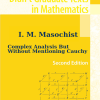


Formerly @counting_hard on twitter. YT coming eventually. Pedant & Co-Pedant.
I don't check here every day
Dodecahedron Fan
Combinatorics / Category Theory / Type Theory
Non-Maths stuff: https://mastodon.scot/@shift_reset
This profile is from a federated server and may be incomplete. Browse more on the original instance.